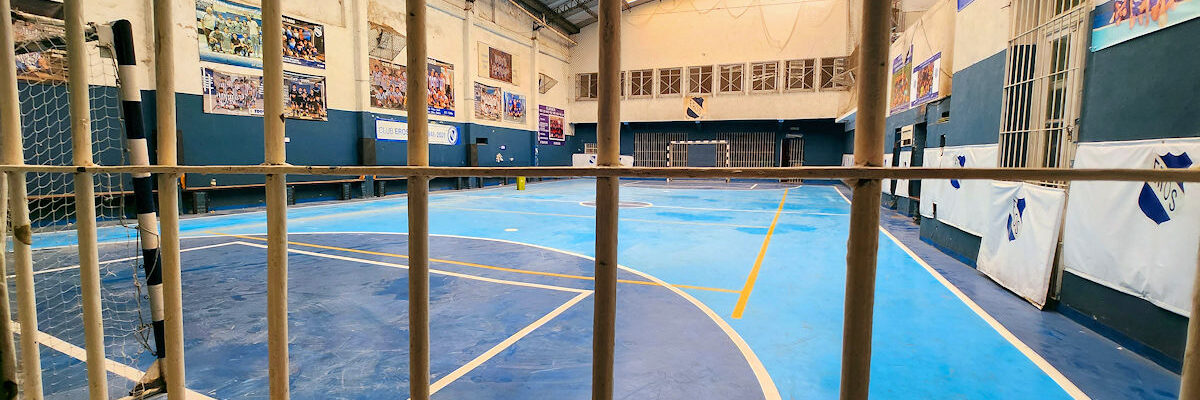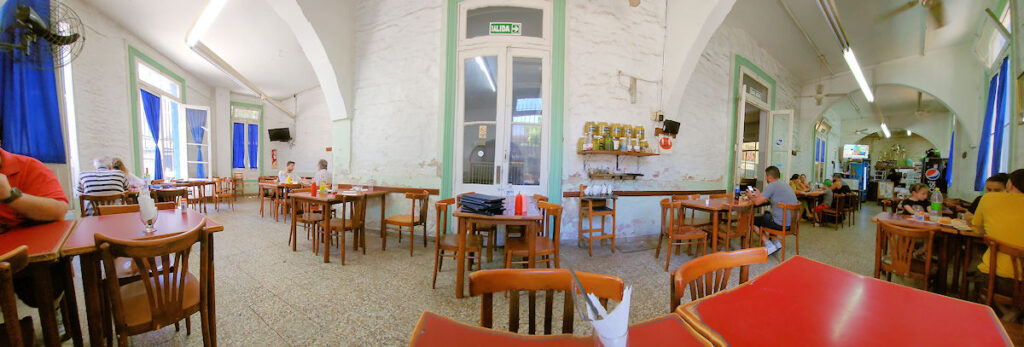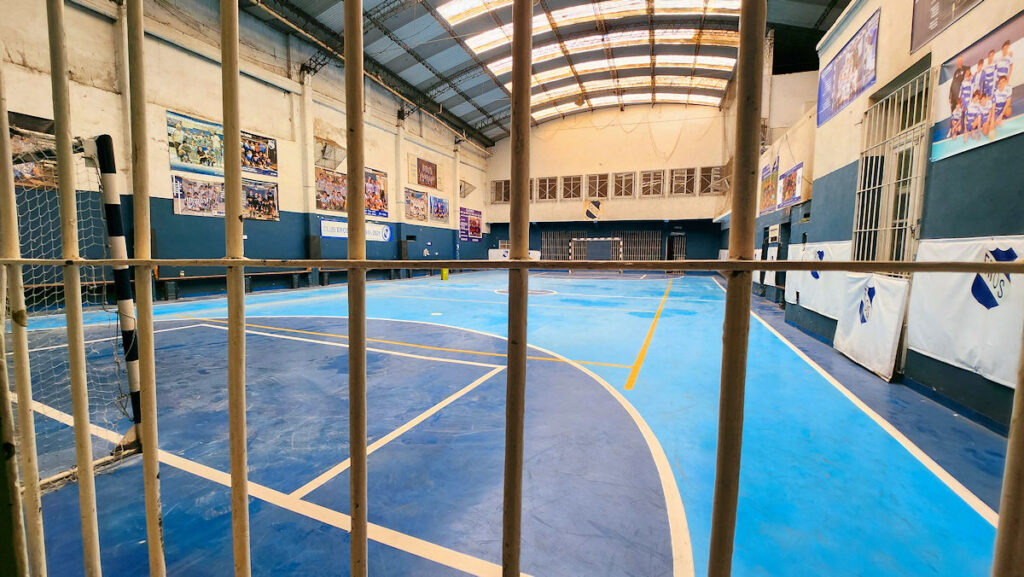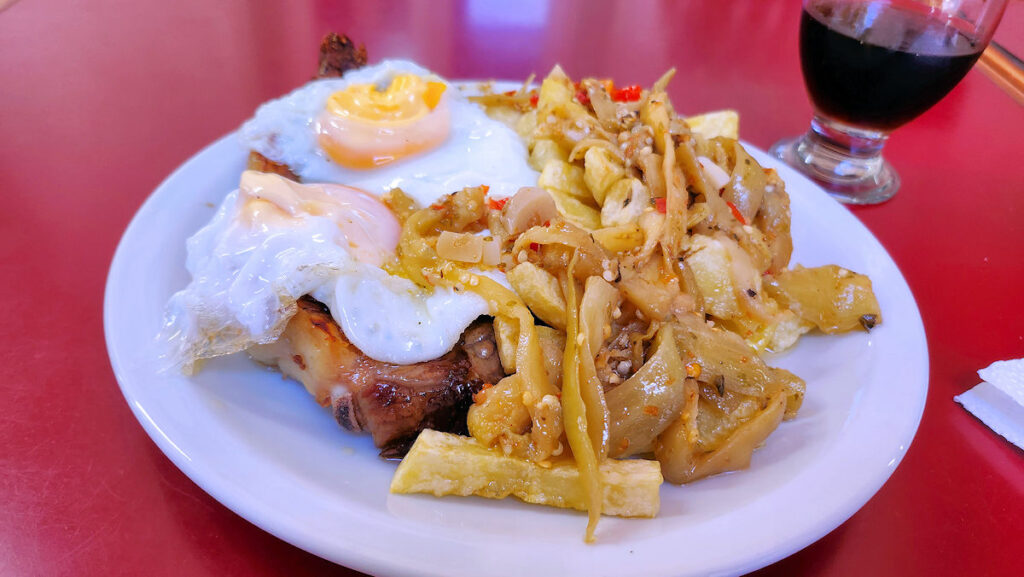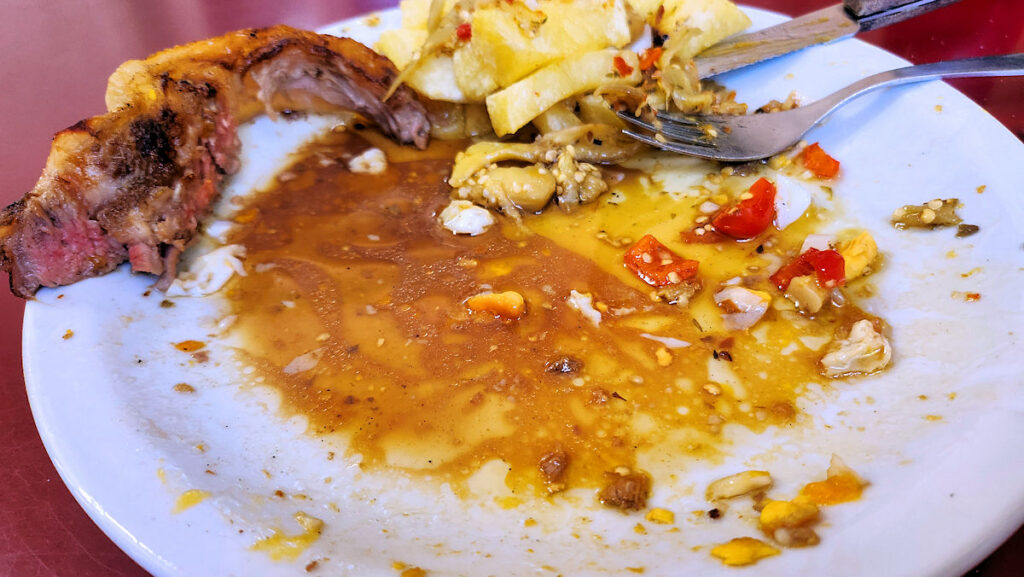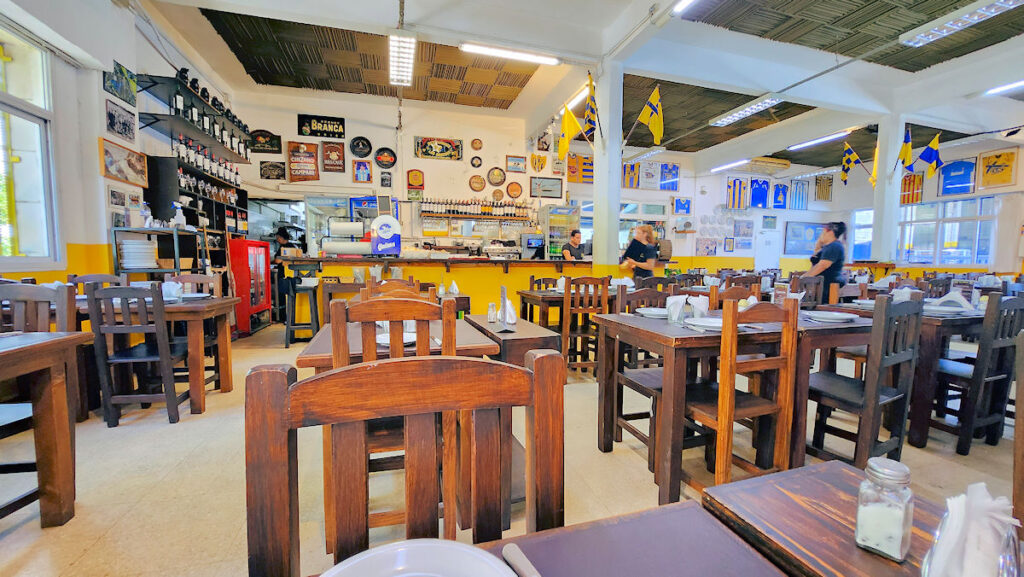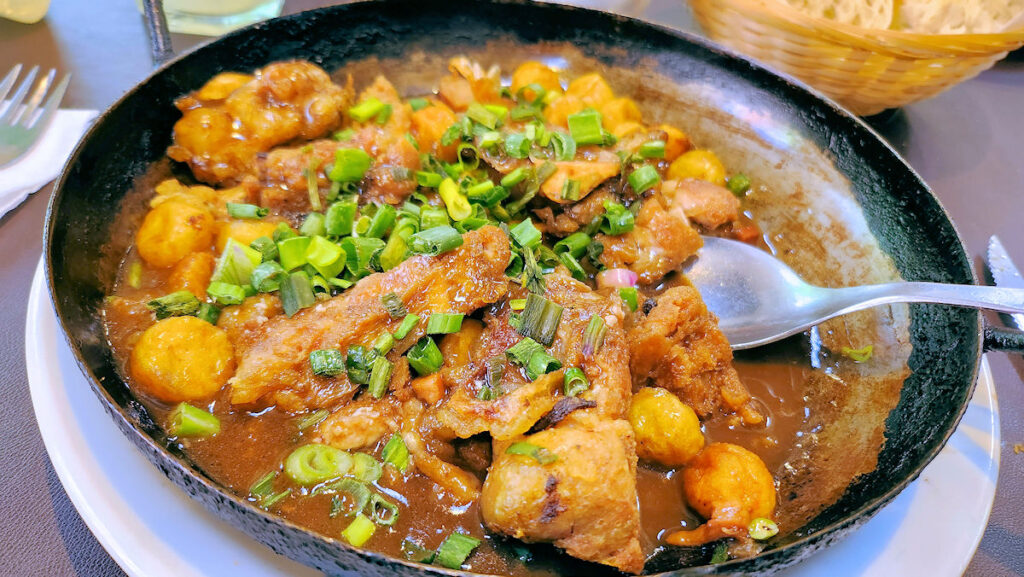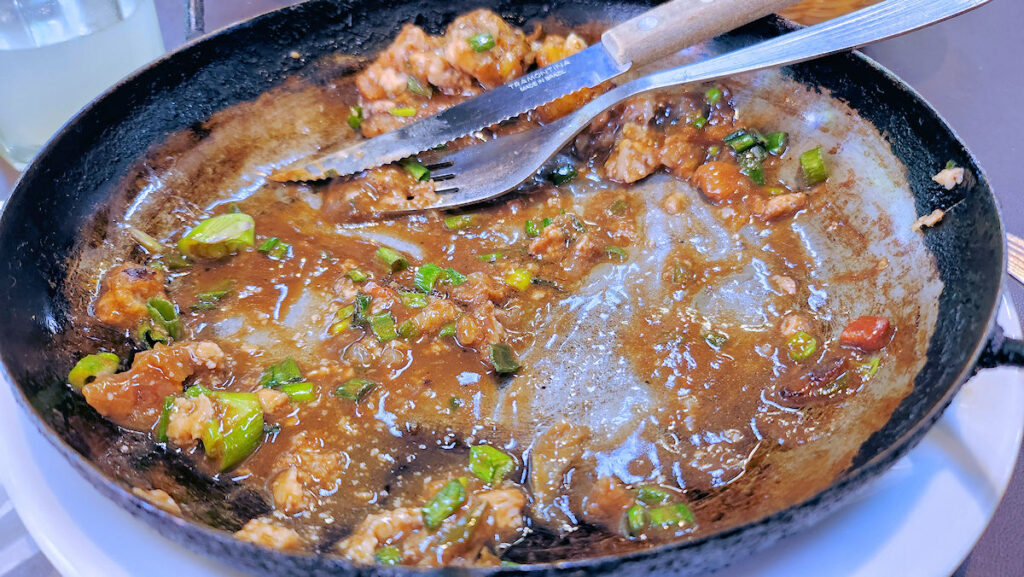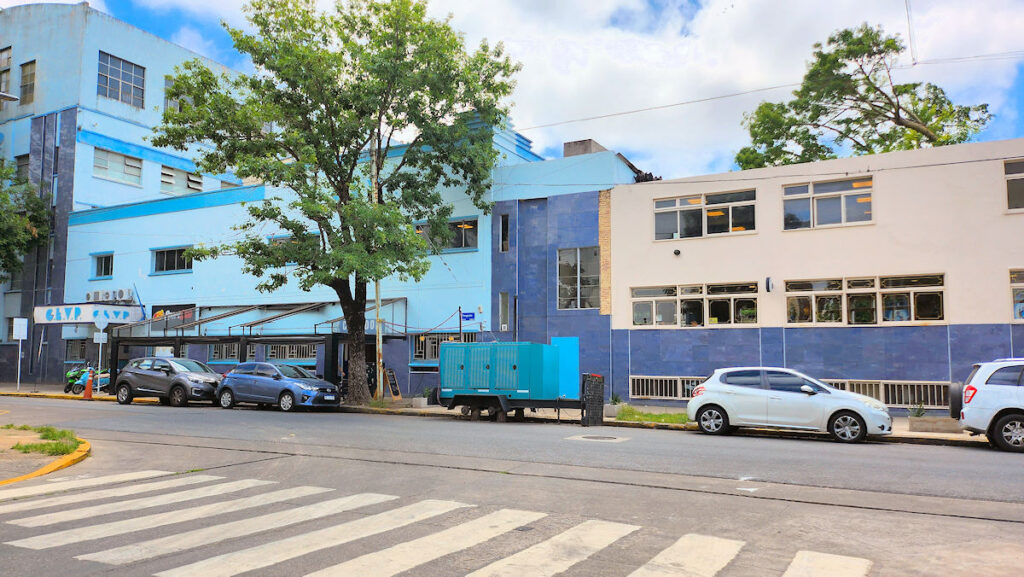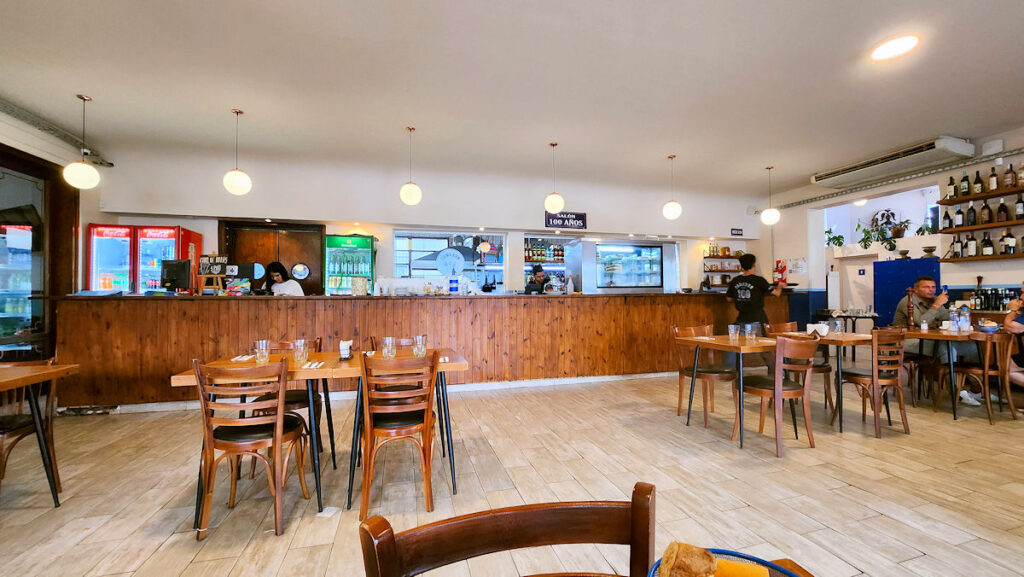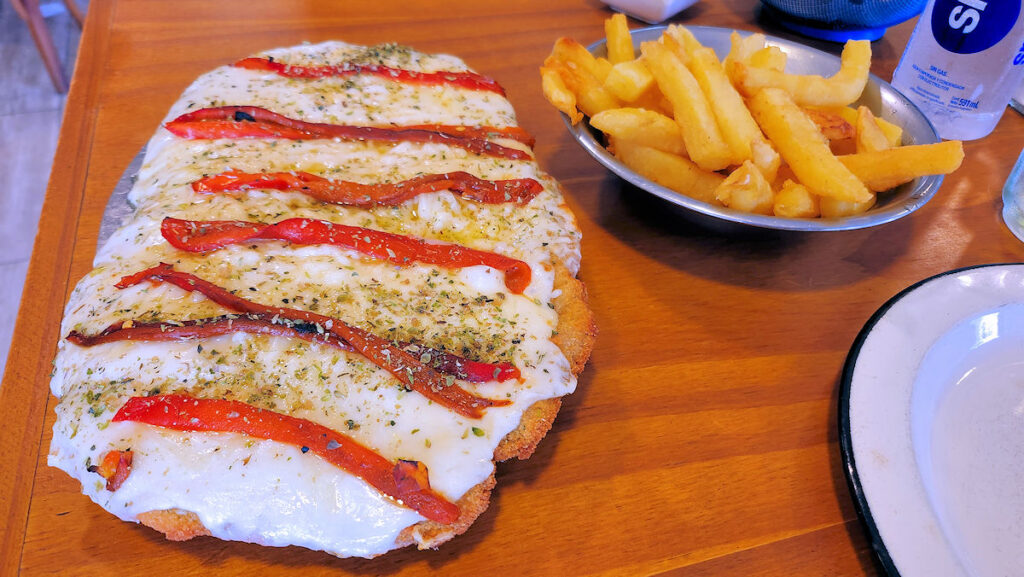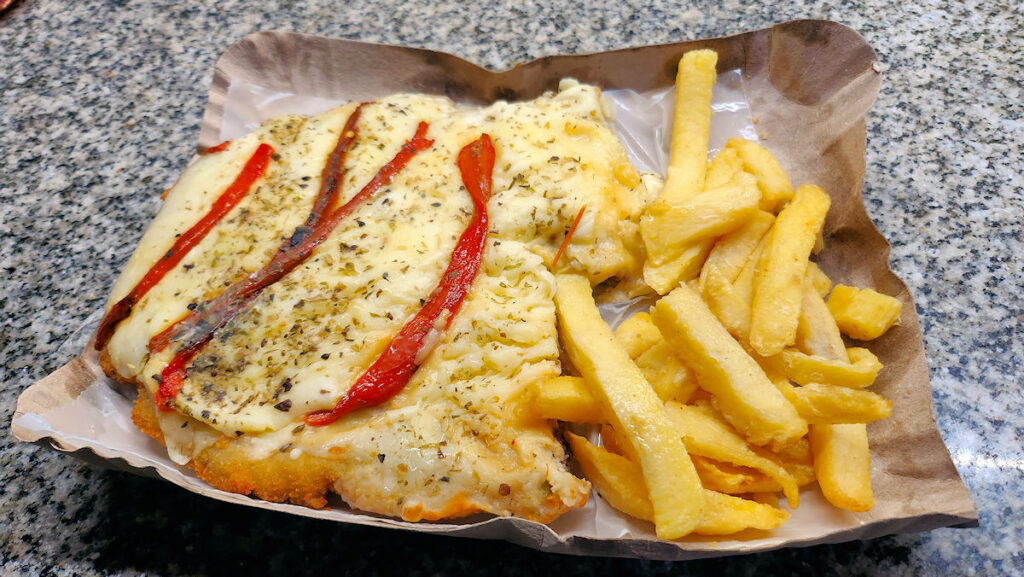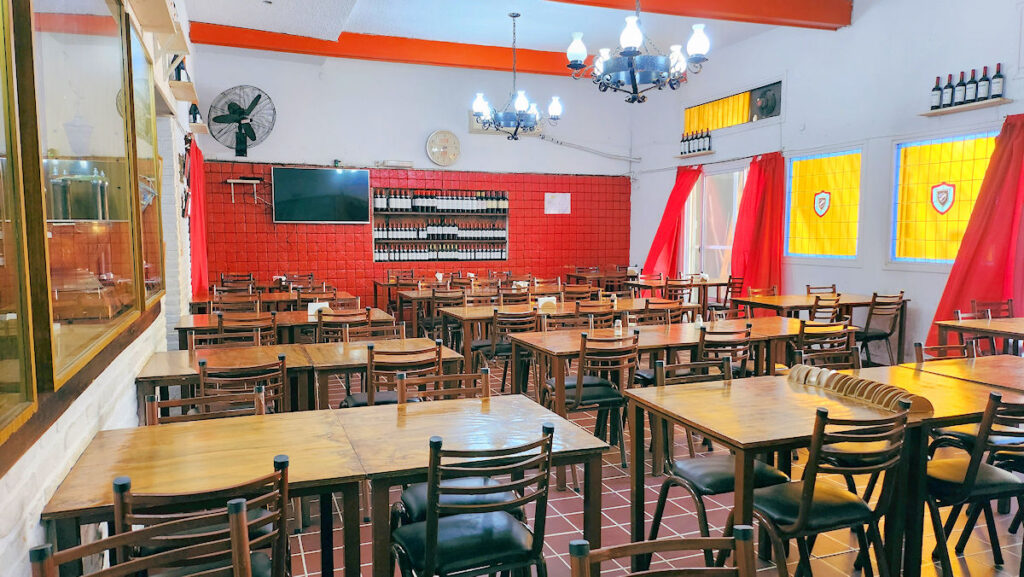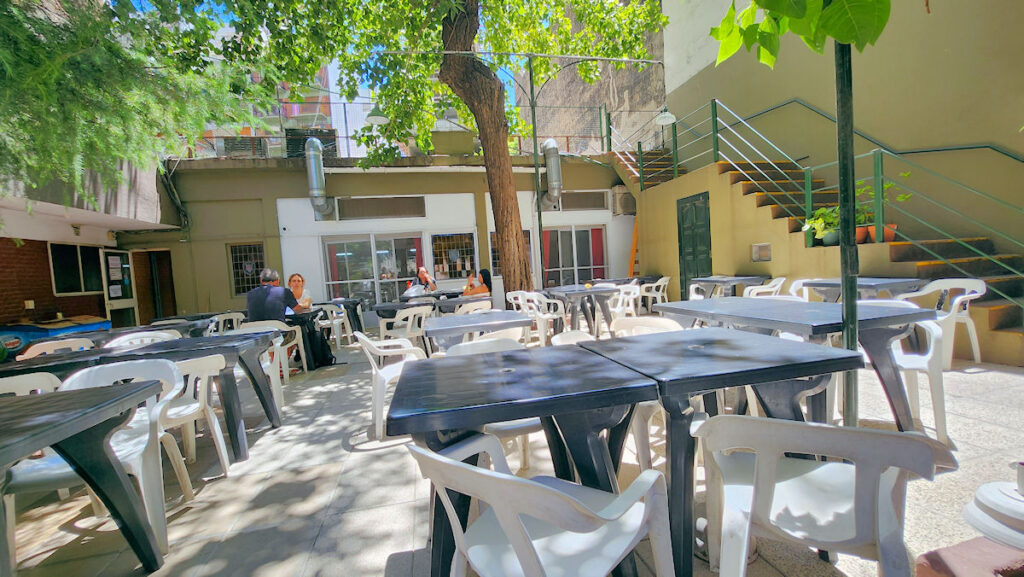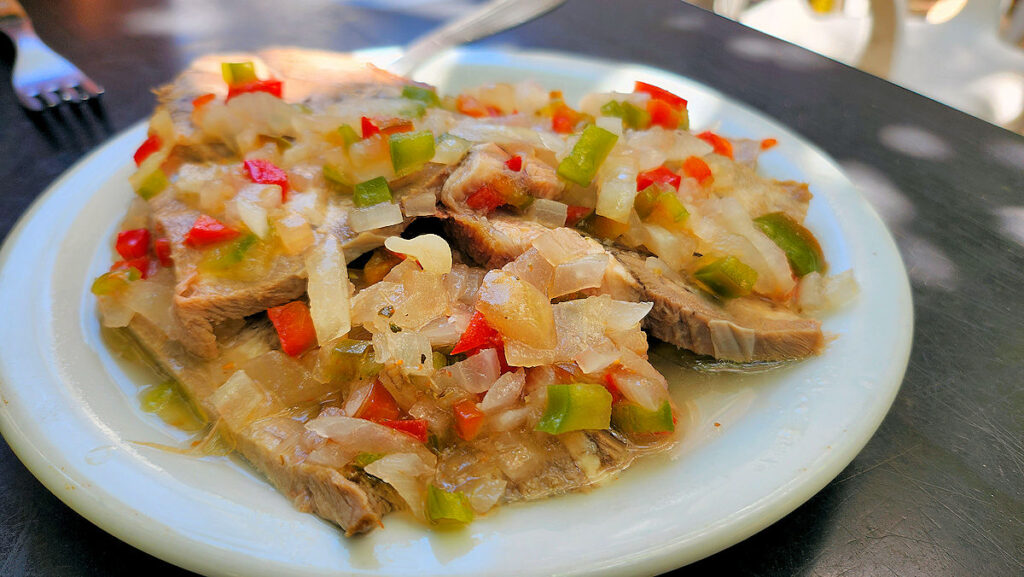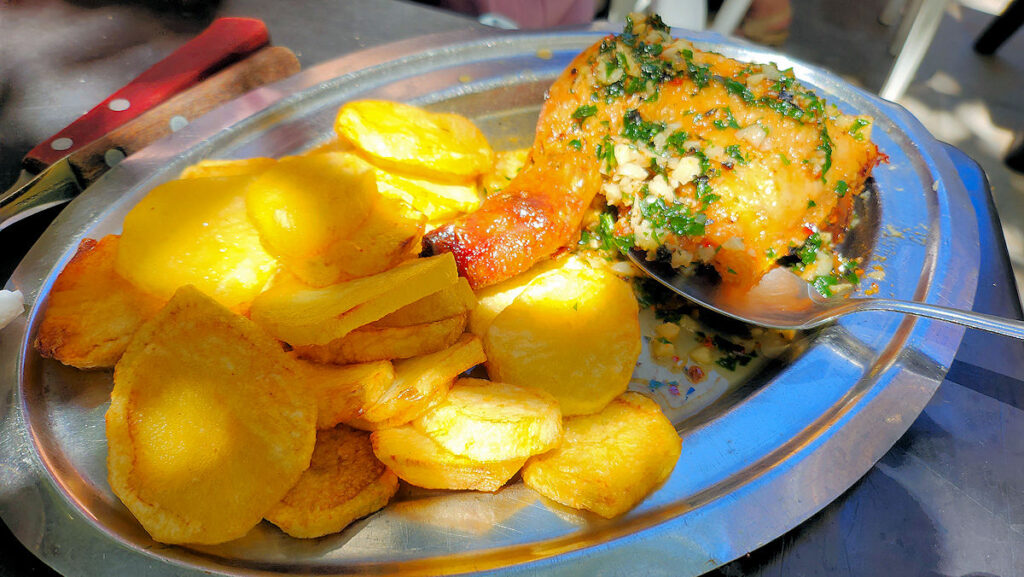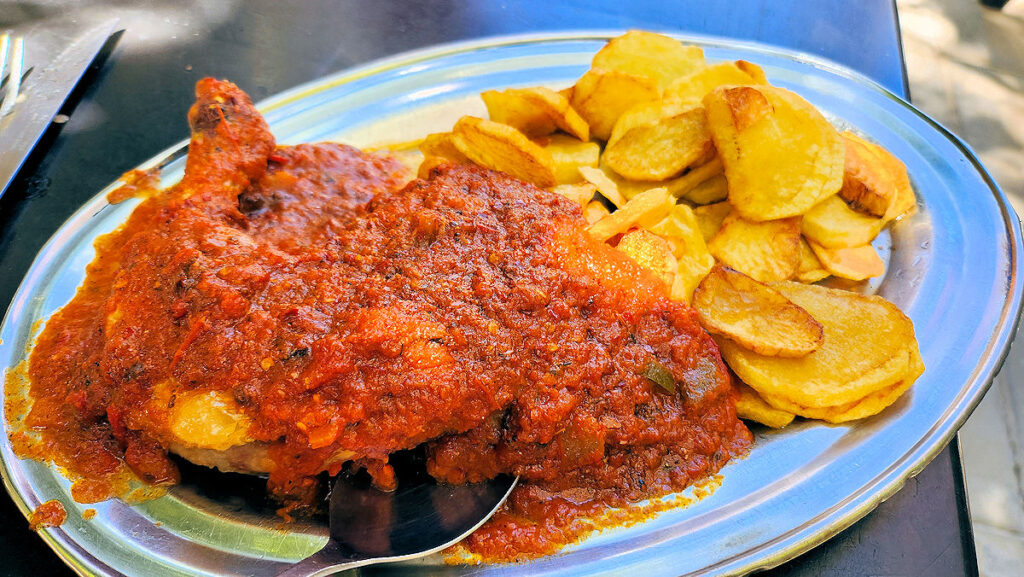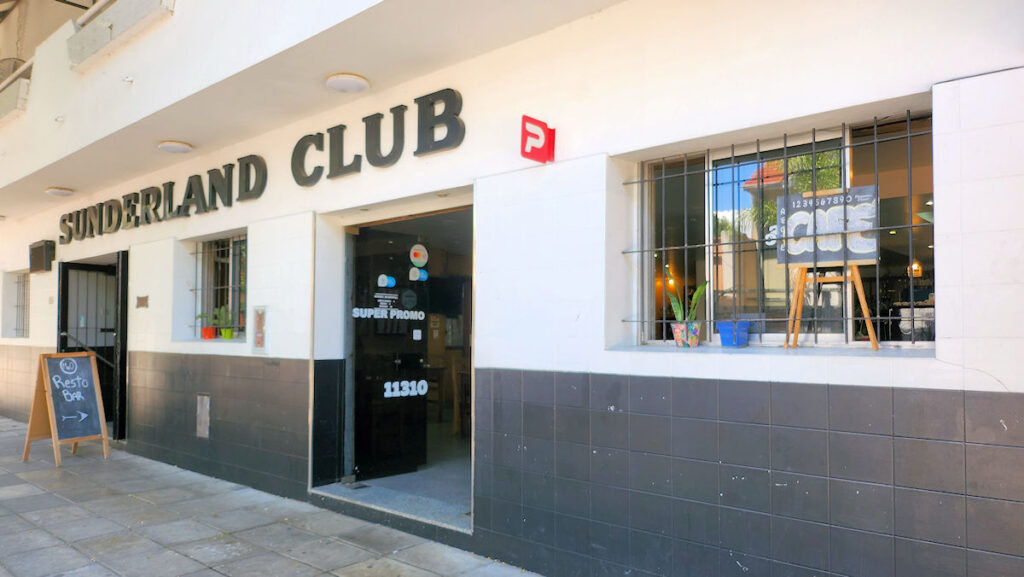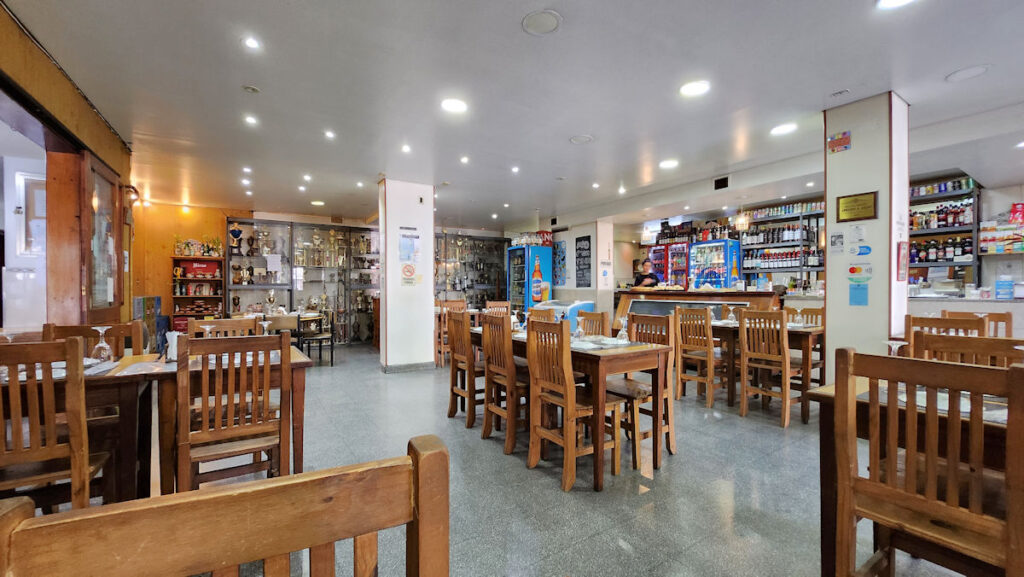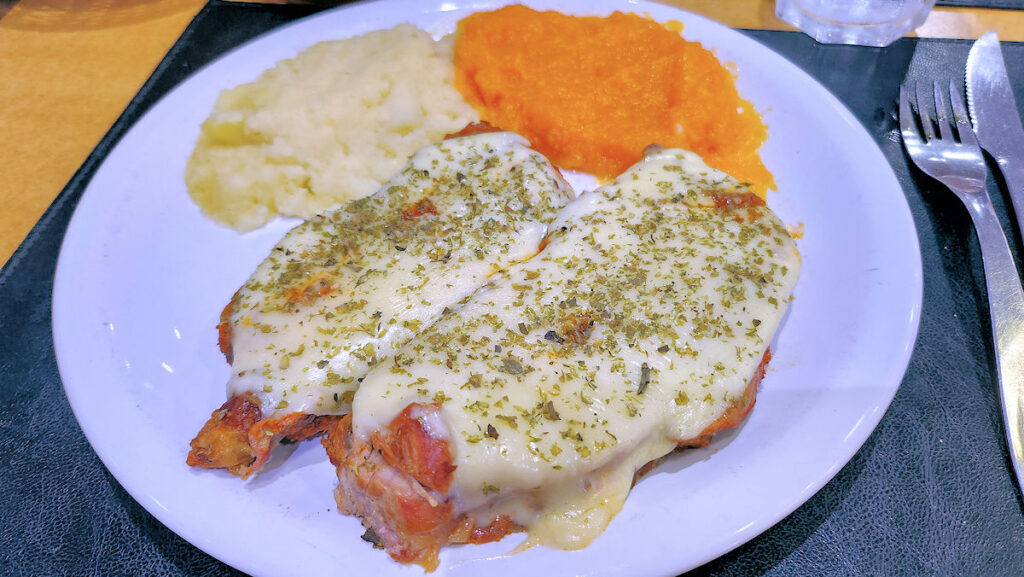[Complete edit: a month in, I’ve decided that trying to keep up with two separate platforms, here and on Substack, is more time than I’m willing to commit. So I’m going to post all articles in both places, which just increases the reach of them. Donations, on either site, are appreciated, in support of my writing and the costs associated.]
Lunching on the cheap at your neighborhood sports and social center
When I was growing up in the Midwest US, if you wanted to play amateur sports, there were facilities at some of the bigger local parks, and many neighborhoods had semi-public pools and/or tennis courts (monthly or yearly fees, anyone could belong). And, of course, there were the YMCAs, which dotted the urban and suburban landscapes. While there’s some of all that here in Buenos Aires, though I admit to being surprised at the existence of YMCAs here, no one ever having mentioned them, nor have I seen them, there aren’t a huge number of publicly run sports facilities. At least not ones that most people would go to. A few public pools and things like tennis courts, generally poorly maintained, do exist.
But starting back in the mid-1860s, futbol clubs began to spring up in various neighborhoods. The earliest ones were created by the British, but they quickly became a local phenomenon. Some of the teams went on to become professional, but most remained amateur. Mostly around the 1920s, many were created by groups of neighbors who saw the need for a place that kids in the barrio could hang out at, play sports, workout, and socialize, rather than being on the streets.
At some point, for the most part post-WW2, one or another of those decided that offering something to eat would be a great idea, and the social club restaurant was born. It quickly became an institution in local culture, and while initially only members of the club may have been able to grab a bite, opening them up to the public created both goodwill and brought in an additional revenue stream. Today, they are an integral part of life here, and most Argentines who I know have their personal favorite – most often the one in whichever barrio they grew up.
The food at these spots tends towards the simple – sandwiches, pastas, milanesas (basically a pounded thin breaded cutlet), and, parrilla, or meat off the grill. Most of them also offer one, or two, unique dishes that people think of as their emblematic, signature dish, something that you won’t find elsewhere, often a twist on a local classic. Prices tend to be held low, and it’s often possible to have a meal that at a “regular” restaurant in town would cost double what you pay at a club atlético.
Now, there are a lot of these out there, and I wasn’t about to try for a comprehensive survey. Instead, I picked out five that come up over and over again in recommendations. I also picked ones that would introduce some classic local dishes, to become fodder for future articles.
Probably the best known social club in the expat and visitor community is Club Eros. Located at the edge of trendy neighborhood Palermo, at the corner of Uriarte and Honduras, this is one of the youngest of the clubs. While the futbol, or soccer, team may have been around longer, and other activities were sponsored, it wasn’t until 1975 that the members pooled their money and rented this space.
An L-shaped dining room with around 20 tables borders an indoor soccer pitch, and, depending on the day, that may or may not be in use. I’ve been on there on days where there were a hundred screaming kids, both on the pitch and in the dining room, and other days where a few scattered diners were quietly enjoying their food.
The first time I went to Eros, some 17 years ago, we had to wait in line for a table. Lunch for two – two main courses (a quarter roast chicken, and two pork chops), two desserts (a flan and a chocolate marquise), two bottles of water – ran us 25 pesos, which at the time translated to about $8. Ten years ago a nearly identical lunch ran us a whopping 140 pesos, or a little over $17. You will note that there is quite the change, also, in exchange rate, which has become more pronounced as time goes on – a conversation for another time.
In all my visits over the years, I’d never tried their signature dish, the Bife Master. It was time. It had always sounded… odd… but over and over, people recommend it. Steak, eggs, fries, eggplant. Eggplant?
It turned out to be a perfectly medium rare sirloin steak. Not huge, but more than ample for lunch. Topped with a couple of fried eggs – at least still gooey, if not runny. And fries that could have used another minute in the fryer to get crisper (but then, Argentines seem to prefer blond fries), tossed with an escabeche of eggplant – pickled with onions and garlic. And you know what? It works. Fries and pickled eggplant is a brilliant combination.
And I certainly did damage to the plate. Yes, given all the juices on the plate, they probably didn’t “rest” the steak after it came off the grill, though mingled with the pickling juices, sop that stuff up with some bread. This plate, plus a soft drink, and tip, came in at just under 10,000 pesos, which is just over $8, but that’s for a meal for one, so about the same as it was ten years ago. And this is the most expensive item on the menu, I could have eaten for a couple of dollars less.
Next up, I was off to Club Atlanta, one of the oldest extant clubs around. The name of the club was inspired by the Greek heroine Atalanta, princess of Arcadia. Founded in the Villa Luro neighborhood in 1906 (or 1904, depending on which history you read), they were and are a popular team in the Argentine Football League. Moving locations several times over the ensuing years earned them the nickname “Bohemians”, which is what the players are called to today. In 1922 they moved to their current location at Humboldt 540 in Villa Crespo.
The massive dining room was renovated just a few years back in 2016, and is festooned with club memorabilia. It’s huge – seating around 160 people, plus an outdoor space that probably brings it to 200. Although I was early, and the place was basically empty, it quickly filled to about half capacity.
Deciding what to eat was slightly more difficult here, as three dishes all get rave reviews from diners – their tortilla de papas, sort of a potato and onion “omelette”, the entraña, a hanger steak served up with papas bravas – roasted potatoes with a spicy mayo; and the mollejas al verdeo, sweetbreads with green onions. Enough people opined that there is no version of the sweetbreads quite like this one, anywhere else, convinced me to give that one a try.
It’s available in appetizer or main course portion, this being the latter. I’d venture that there’s a solid half pound of beautifully, perfectly, cooked sweetbreads – tender on the inside and with a thin, crispy shell on the outside, bathed in a rich, meaty sauce flavored with green onions, and the whole thing accented by lovely papas noisette, round balls of sautéed potato goodness. The sauce reminds me a bit of something you’d get on takeout egg foo young, in a good way.
And although a few of the pieces of sweetbreads could have been trimmed a bit better, and I left a small pile of fat at the back of the plate, these were among the best I’ve had in Buenos Aires, and certainly the best “al verdeo” version. And all told, with beverage and tip, I spent a whole 9000 pesos, or about $7.50.
Heading further out to the northwest part of the city, I was aiming for the spot that many opine has the best milanesas of any social club in the city. It’s also one of the oldest, having been founded in June of 1922. While Club Gimnasia y Esgrima de Villa del Parque may be a mouthful, it tends to be known by its acronym, Club GEVP, at Tinogasta 3455 in Villa del Parque, right by the train station, which makes it easy to get to. This is a fairly large place – this main room as you enter is one of two, plus there’s an outdoor patio. This one was a bit busier – I had to wait to get a decent shot without a lot of people in it – particularly kids, since most were kids, and these days, taking photos of kids, even in public places, is, well, suspicious. Or something.
First off, for those who aren’t familiar with milanesas, they are simply a breaded cutlet – usually of veal (not milk-fed veal, we don’t do that here, just young cows), though chicken is quite common, and pork and lamb occasionally make an appearance. At its most basic, it’s served unadorned, usually with a slice of lemon, and/or, on request, “a caballo” (literally, “on horseback”), topped with a fried egg or two. Beyond that, they can get quite creative, though probably the two most common are the napolitana, topped with tomato sauce and cheese, and the suiza, topped with bechamel and cheese. My young waitress opined that the most popular at GEVP is either the suiza or the americana (her personal favorite), the latter topped with bacon and American cheese. Albeit not her fave of the two, I went with a suiza.
I’m not sure you can tell from the angle of the photo, but this thing is huge. It’s also cooked beautifully, with a crisp exterior, not at all greasy, and the interior cooked a surprising medium rare rather than well done. The bechamel is well seasoned, they used decent cheese, and the roasted peppers and dusting of provençal, a mix of dried garlic and parsley, were a nice touch.
And just to make the point of the size, I ate about half of it, brought the rest home, and what was left weighed in at 620gms, so the whole thing was a decent bit over a kilogram, or around 2½ pounds. Now, it was a little pricier than the other lunches on this tour of social clubs, but it was easily enough for two to share – so the 11000 pesos for the milanesa (plus beverage and tip), while it came in at roughly $11 total, was still a steal.
A bit closer to home is El Bochin Club, at Julián Álvarez 2355 in the Palermo neighborhood. This club is a bit different than many of the others, being without, as far as I know, an adult futbol (soccer) team (there appears to be a youngsters team, but it looks like they practice elsewhere. It was founded in 1925 directly next to the comisaría, or police precinct, and much of its history seems to have been around tango. These days, martial arts, archery, paddleball, and film festivals seem to be its forte. There’s a small dining room in the club building, but unless the weather is inclement, most people opt to dine in the tranquil garden out back.
Although they offer a fairly large array of items on their menu, they are particularly known for their grilled and roasted chicken dishes. I had company on this outing, so a bit more food ended up on the table. We started off with a classic lengua a la vinagreta (pickled tongue), and both agreed this was one of the better versions of this dish we’ve had. The tongue was perfectly tender, and the pickling was well spiced and absolutely delicious.
We then went for a pair of chicken dishes. The first, with the aforementioned provençal, though here with fresh parsley and garlic; and the second, calabresa, a chili-laden tomato sauce that, for Argentina, was well into the picante world. It’s unusual to find an Argentine sauce, and more so at an old-school location, offering something quite that spicy. The papas españolas were excellent, and used to sop up every bit of that sauce. With prices running around 8-9000 pesos for an ample main course, plus beverage and tip, you can easily get away with lunch for about $5-6.
And, I’m going to wrap this up with a visit to the far-flung Sunderland Club, Lugones 3161 in Villa Urquiza, the far northwest of the city. This place gets really mixed reviews, particularly for their grilled meats and milanesas, which tend to either get trashed because “they’re practically raw” or touted because “finally, someone who doesn’t overcook meat”. This, by the way, is a common binary issue in Argentina. Tradition is to cook meat “low and slow”, like we might think of as barbecue, until it’s extremely well-done, but at the same time, falling apart tender. It’s only in recent years that you could even order a steak medium, medium-rare, or less, and expect to get what you ordered.
Given that, I decided to go with a dish that’s certainly available in many a casual Argentine restaurant, but not one I often order. Bondiola a la pizza is slow roasted or braised pork shoulder that’s sliced, and then topped with pizza sauce and cheese. A keto diet pizza if ever there was one. And, a tribute to both the Argentine penchant for putting cheese on everything, plus their strange mystique-en belief that Argentine pizza is the best in the world. The puré mixto, mashed potato and squash, is a common accompaniment offered to dishes here. In general, not my favorite, as for some reason, despite all the cheese and dairy that they normally put on everything, they tend to make these with water – no milk, cream, butter. I’ve never figured that one out.
The pork was delicious – although cooked as described above – until more than well-done, it was fork tender. I’m guessing it was braised. Decent quality on the sauce and cheese, but, along with the two mashes, completely devoid of salt. How do you make pizza sauce and not put salt in it? Semi-correctable with salt (and white pepper) shakers available on request, though not the same as being cooked into it. Main course plus beverage and tip, a mere 7000 pesos, a little under $6.
